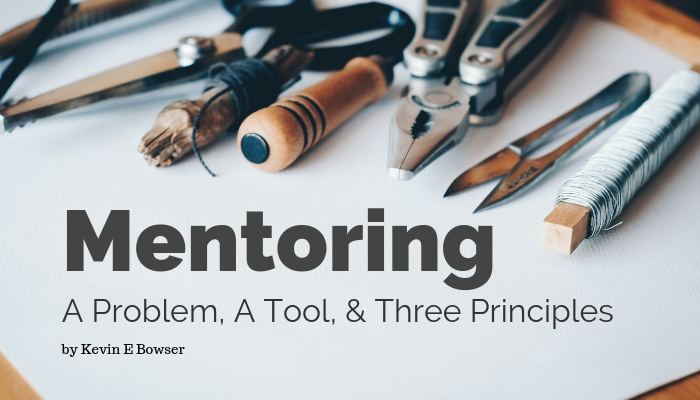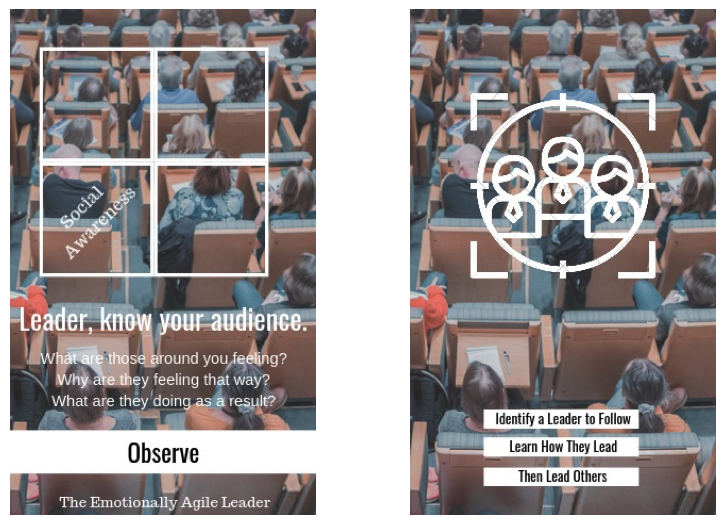Leadership is not taught. It is modeled. Therefore, it must be lived out and demonstrated before our very eyes in order to be able to impact followers and those who yearn to be leaders. In other words, it is “caught” and not taught. If it is true that leadership must be modeled, and I believe it is, then it is incumbent upon me to provide information to help you to model mentoring with intentionality.
Mentoring is not a mass production process. Rather, it is done more in the style of an artisan or craftsman who painstakingly creates works of art one at a time over a substantial period of time. Not that we are “creating” a leader. A mentor cannot make a leader out of a person with zero aptitude for leadership. It is akin to the old sports analogy that says: “You can’t coach speed. Either you have it, or you don’t.” A coach can make you faster. But a coach can’t make you FAST. There must be some inherent speed abilities with which the coach can work. Likewise, as mentors, we can’t make our protégés leaders. But, if they are willing to follow and learn, we can make them better leaders tomorrow than they are today.
Mentoring to become an Emotionally Agile Leader is a six-step process with some basic principles undergirding the process. At the very highest level, it can be summarized in the following manner. I will talk about the six steps in a future article. But, for now, let’s look a problem, a need, and the three principles.
The Problem with Mentoring
One of the ways to make the mentoring experience more productive is to address the frequent problem in many mentoring relationships. The problem is that protégés get super excited about mentoring. Often a book is recommended by the mentor and commitments are made to read it faithfully and come together each week to discuss a topic each week based upon the material covered in the assigned chapters. And then life gets in the way. Even the most committed protégés face timing and prioritization challenges.
This is most certainly true of leaders who have existing and ongoing leadership responsibilities. We cannot call a halt or press the “pause” button on life while we work on something that will inevitably make us better. This results in the mentor and the protégé coming together for a session and facing the awkward reality that the protégé has not read the required material. Reasonable discussions on the material are difficult. All that is left to discuss are politics or sports. And that is frustrating for both parties.
The Need for a Tool
The TEAL Methodology has acknowledged that reality and addressed that through the use of “TEAL Topic Cards.” These cards are double-sided cards that contain a keyword or phrase that is tied to some material covered in The Emotionally Agile Leader. It also contains some thought-provoking questions or comments that are also tied to the key topic on the card and that are addressed in the book. The back for the card has a single graphic or image that reminds the mentor and the protégé about the overall theme of the mentoring session.
In the event that life gets in the way, the mentor will pull out the card with some text and a graphic that reflects the central thought or theme and that will help to stimulate the conversation in the event that the protégé has not had time to read the material. And if they have read the material, this will serve as a refresher and discussion prompt. An example card with a mock-up of one of the card’s front and back is shown below and illustrates in text and picture how they will fit into each of the mentoring sessions. But, more of that to come later.
The Three Principles
We Need to Identify a Leader Worthy of Following
Not every leader is worthy of following. We must understand that fact from both the leader’s and the follower’s perspective. As a follower, I must find a leader worthy of following whose successes are not compromised by their ethics or methods. And as a leader, I must always be diligent to be worthy to be followed.
We Must Learn How They Lead
What is the secret to their success as a leader? What makes them worthy to be followed? And what are they doing specifically that makes them successful as a leader? We must be diligent in discovering what it is about them that makes them a great leader.
We Must Then Lead Others as They Do
After we learn, we must do. Leadership is not an academic pursuit. It is a practical matter, and we must then take what we have learned and apply it to our leadership situation. We will cover it in our own personality and style. But, the key is that must go on to be a leader and to create even more leaders.
Resonating
Does this resonate with you? Do you have a need for leadership mentoring in your own life? Do you see an emerging or a struggling leader that can benefit from you coming alongside of them and mentoring them? If so, I have a solution for you. The solution is contained in the six-step process that I have developed. Watch in the coming days for that process. Or, reach out to me right now and I can help you get started before it even becomes available to the general public.





Please note: I reserve the right to delete comments that are offensive or off-topic.